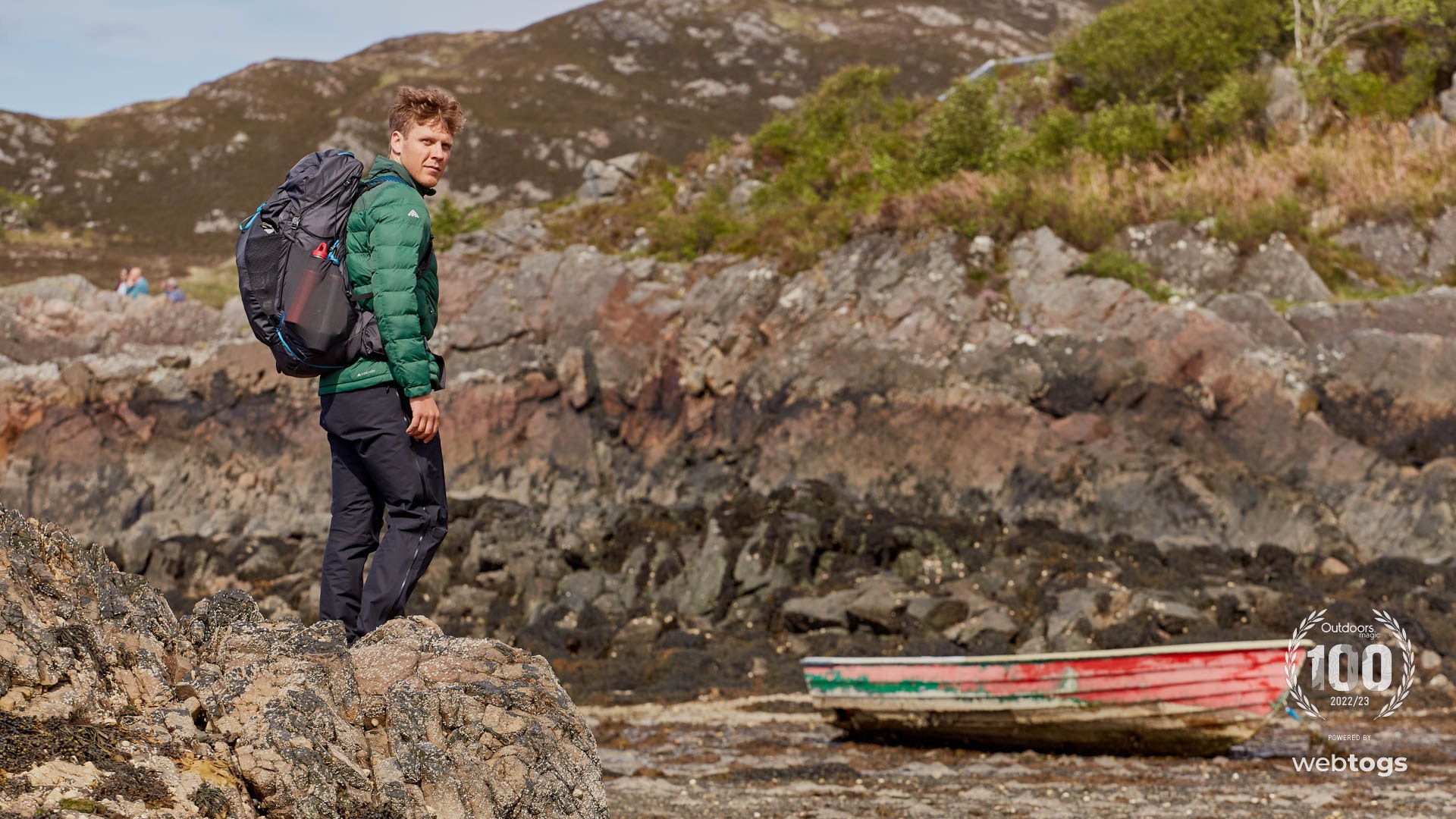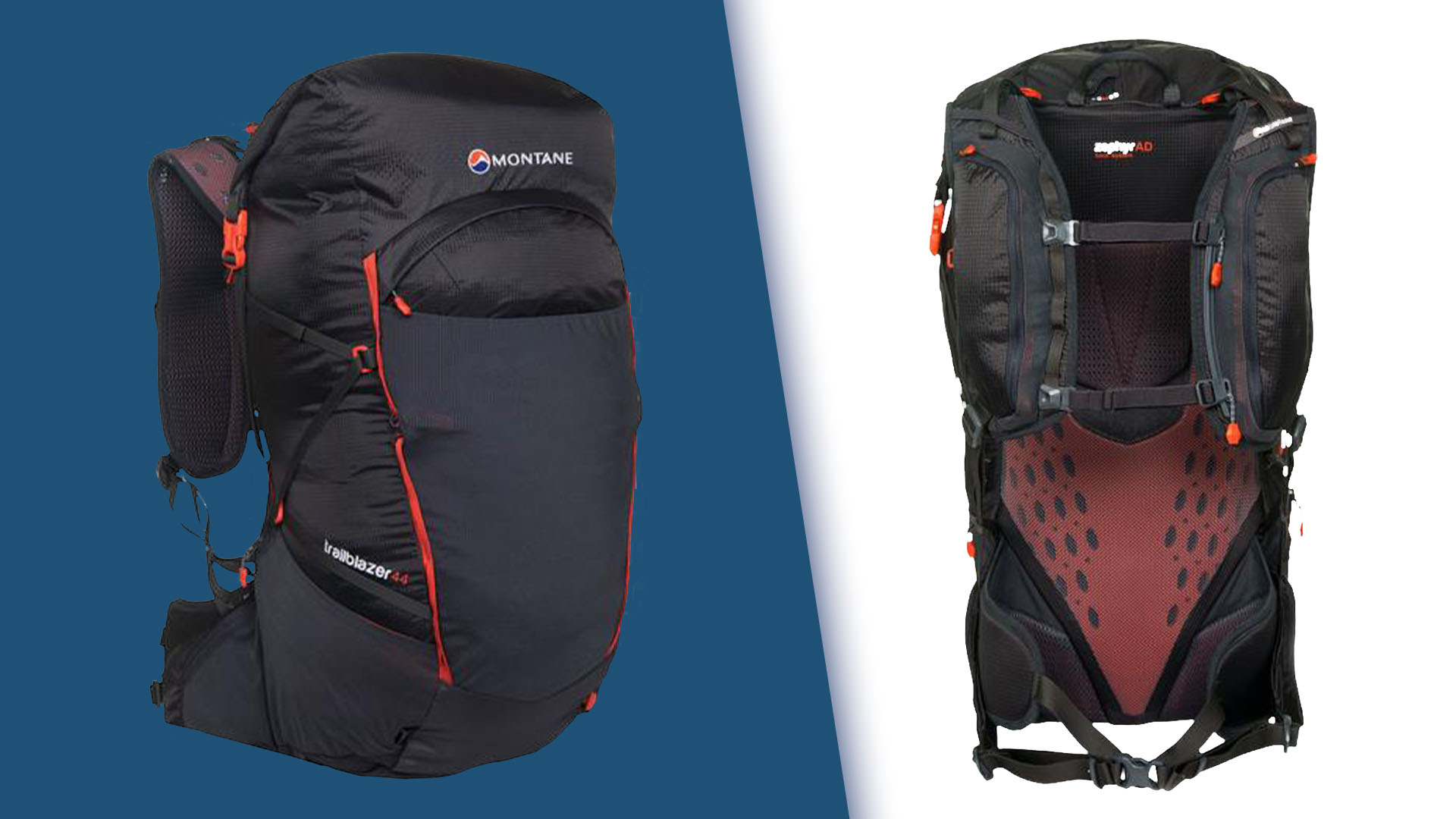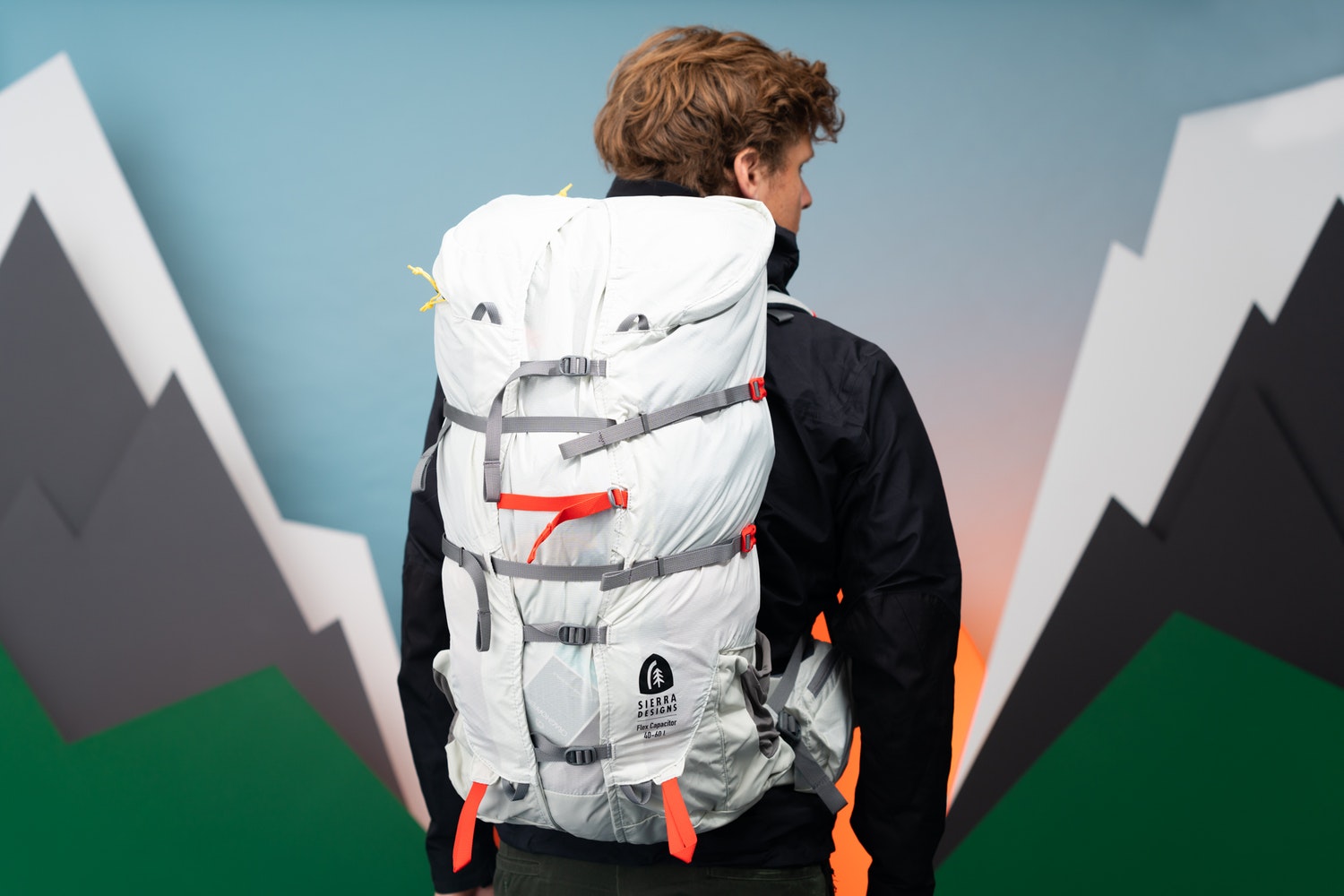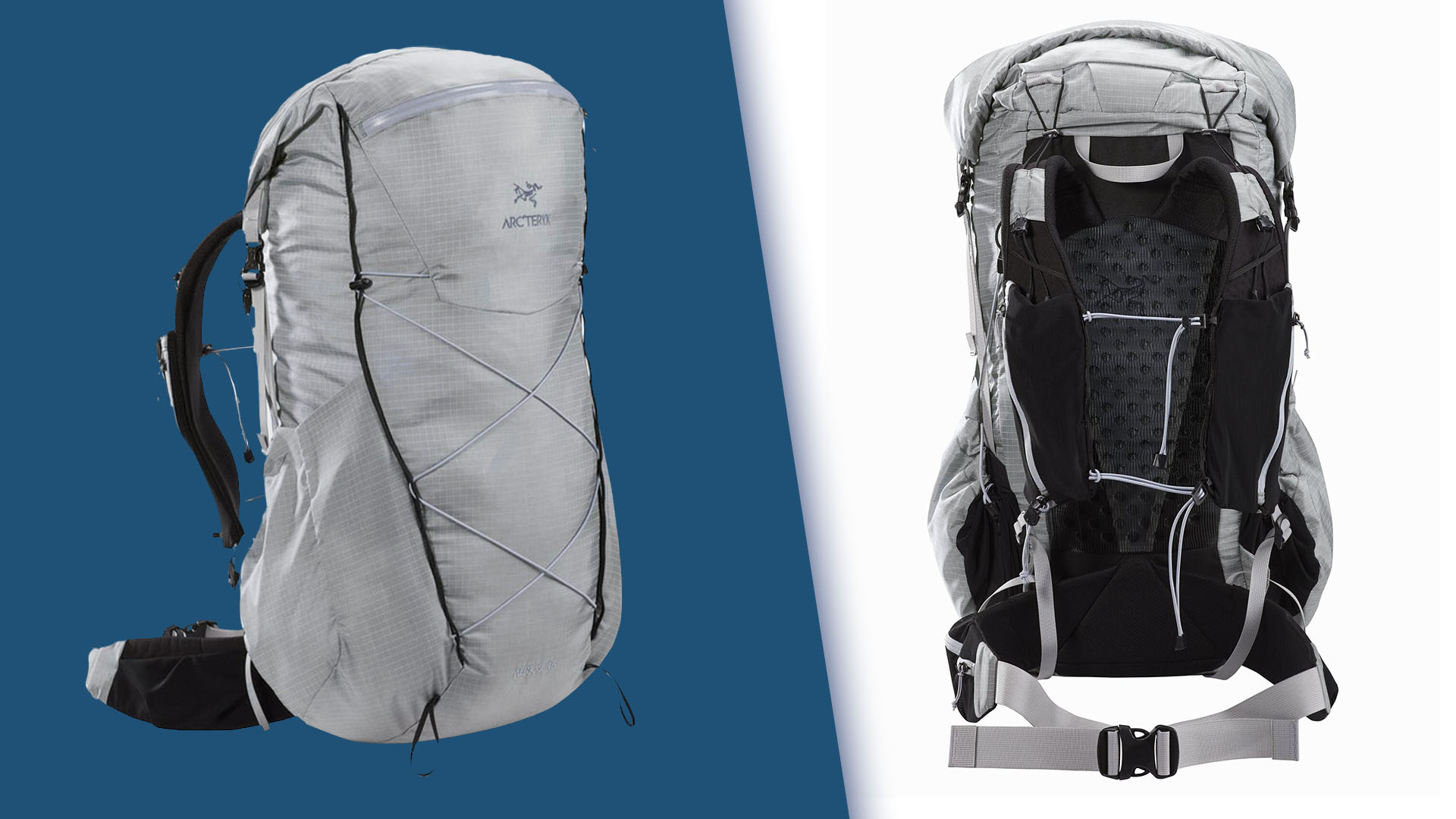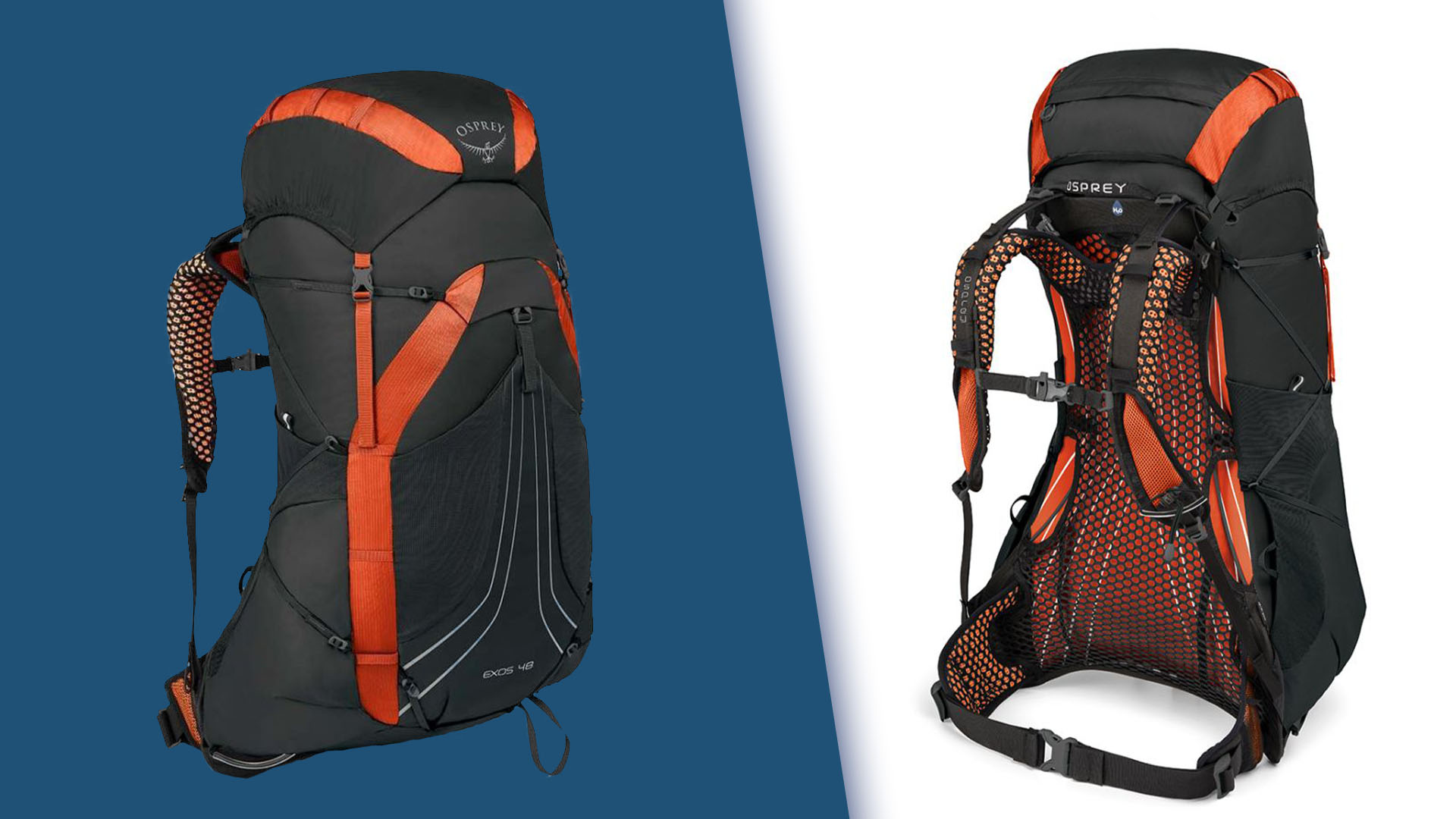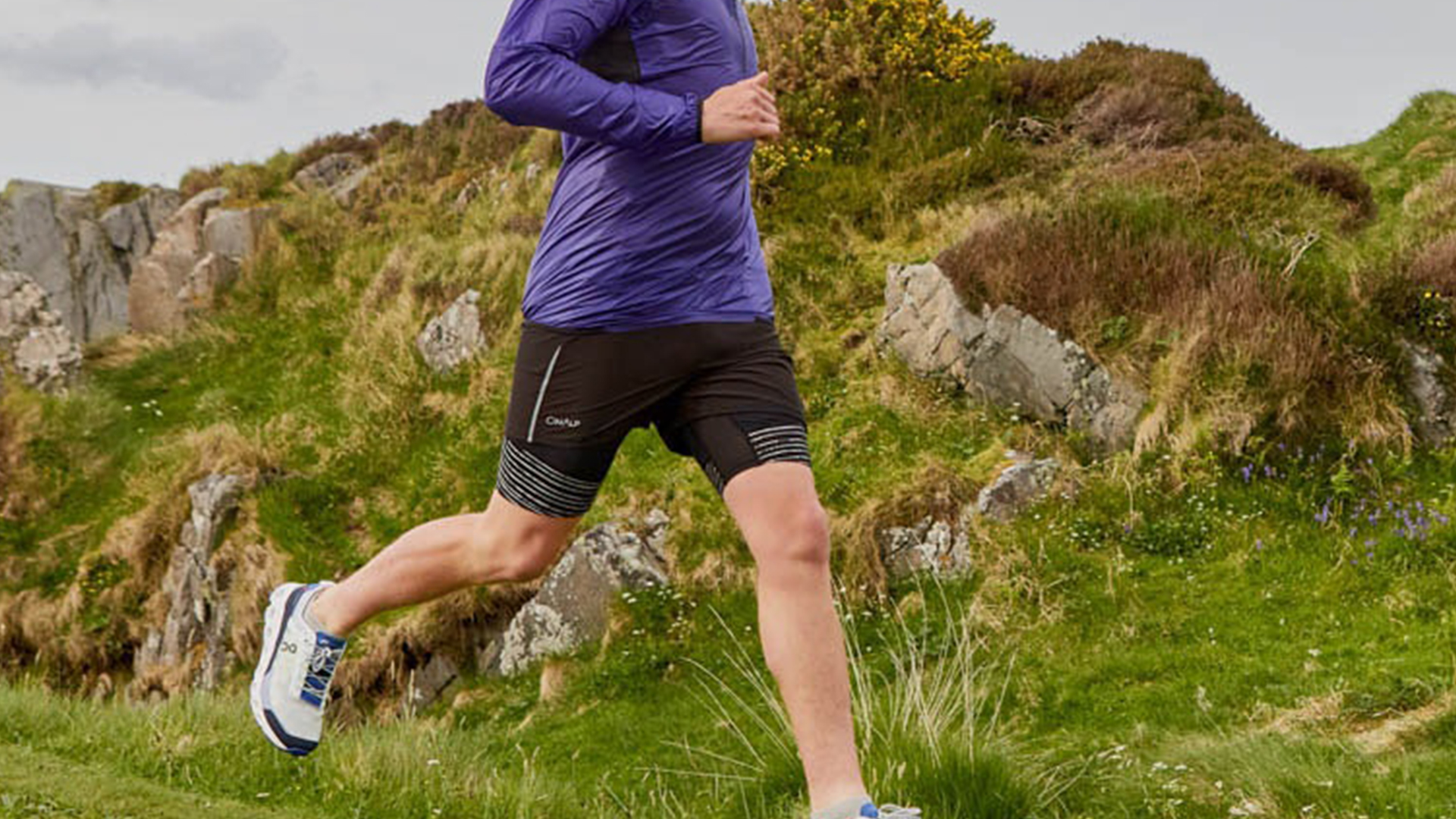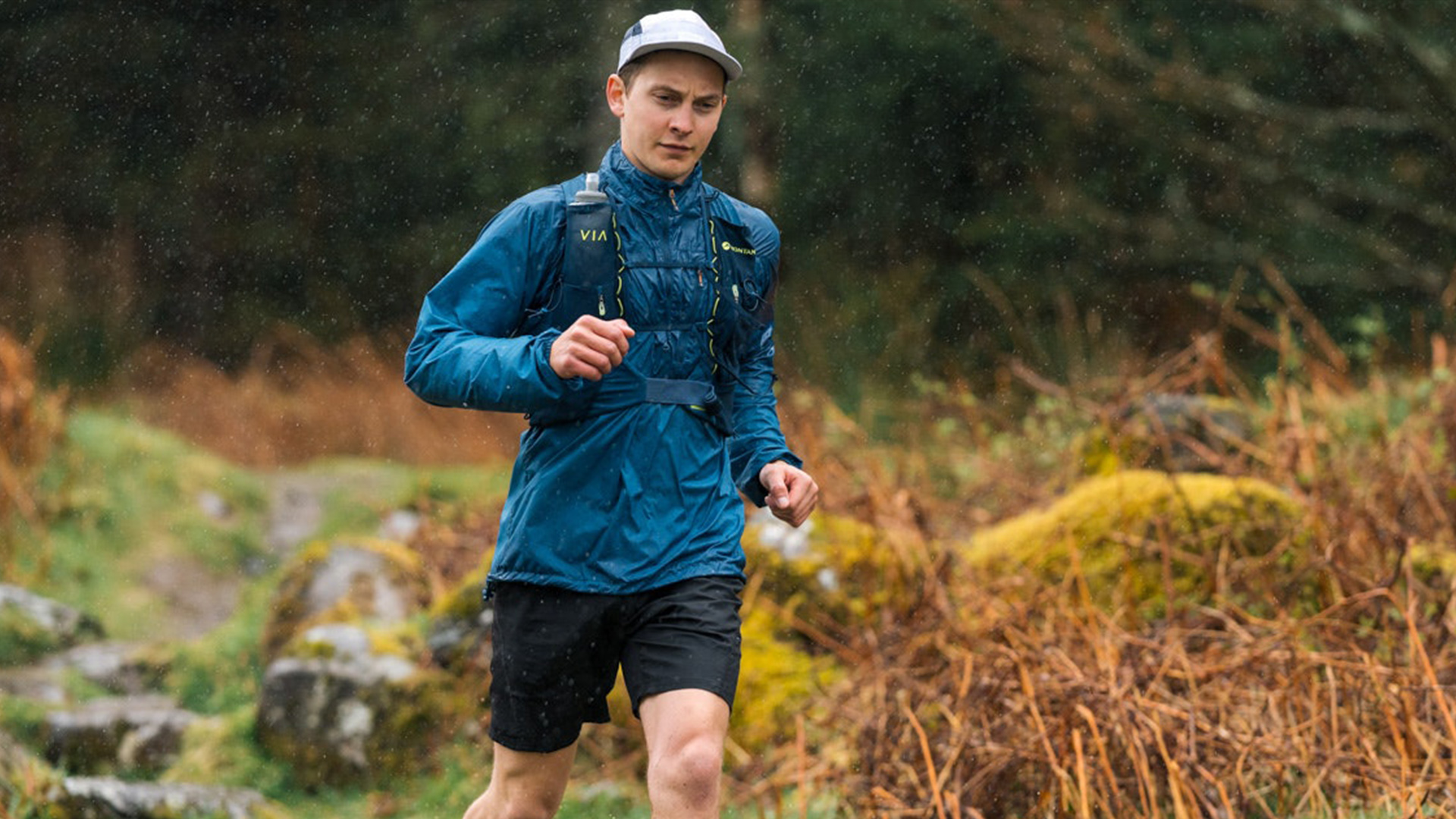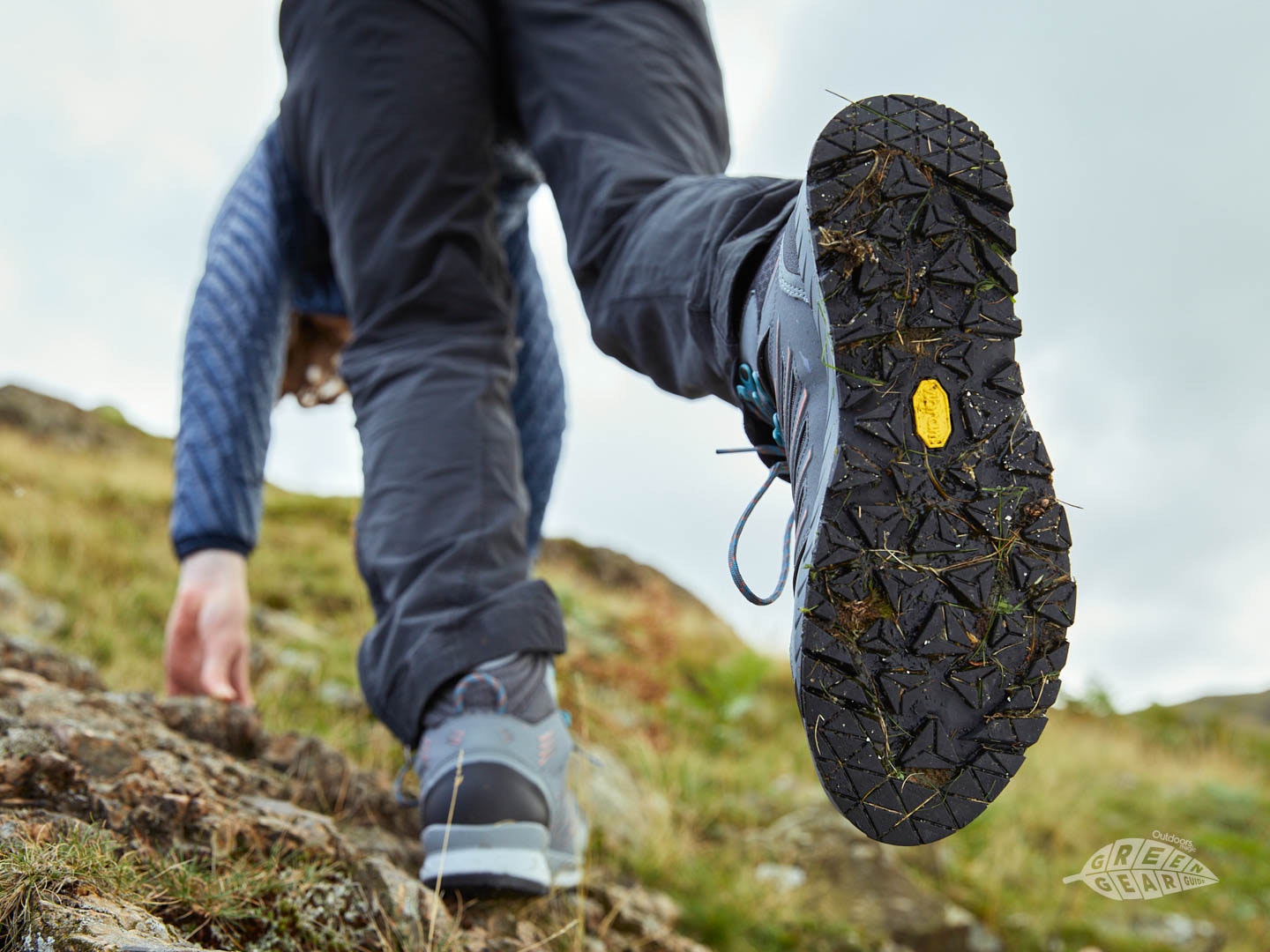Alightweight backpack and a lightweight overall load means you can cover more miles, more quickly. It’s a concept that has undeniable appeal and numerous benefits, particularly for your body. After all, nothing ruins a long-distance walk like crippling shoulder and hip pain after three days on the trail, usually caused by a hugely oversized pack stuffed with loads of unnecessary kit (see: Cheryl Strayed’s book Wild, or pretty much any novice hiker attempting their first multi-day walk. Don’t worry, we’ve all been there). The far more attractive alternative is to take only what you need, while minimising the weight of the rest of your gear at the same time. And that, in essence, is the spirit of ultralight backpacking.
It sounds simple, but actually this approach means being fairly disciplined when it comes to packing your kit. It also means knowing what you need and don’t need on the trail – which will differ greatly depending on the individual. After all, one’s person’s hiking essential is another’s frivolous luxury. This usually comes with experience, so many ultralighters are experienced backpackers who have gradually honed their kit down over multiple miles and plenty of time spent tramping trails.
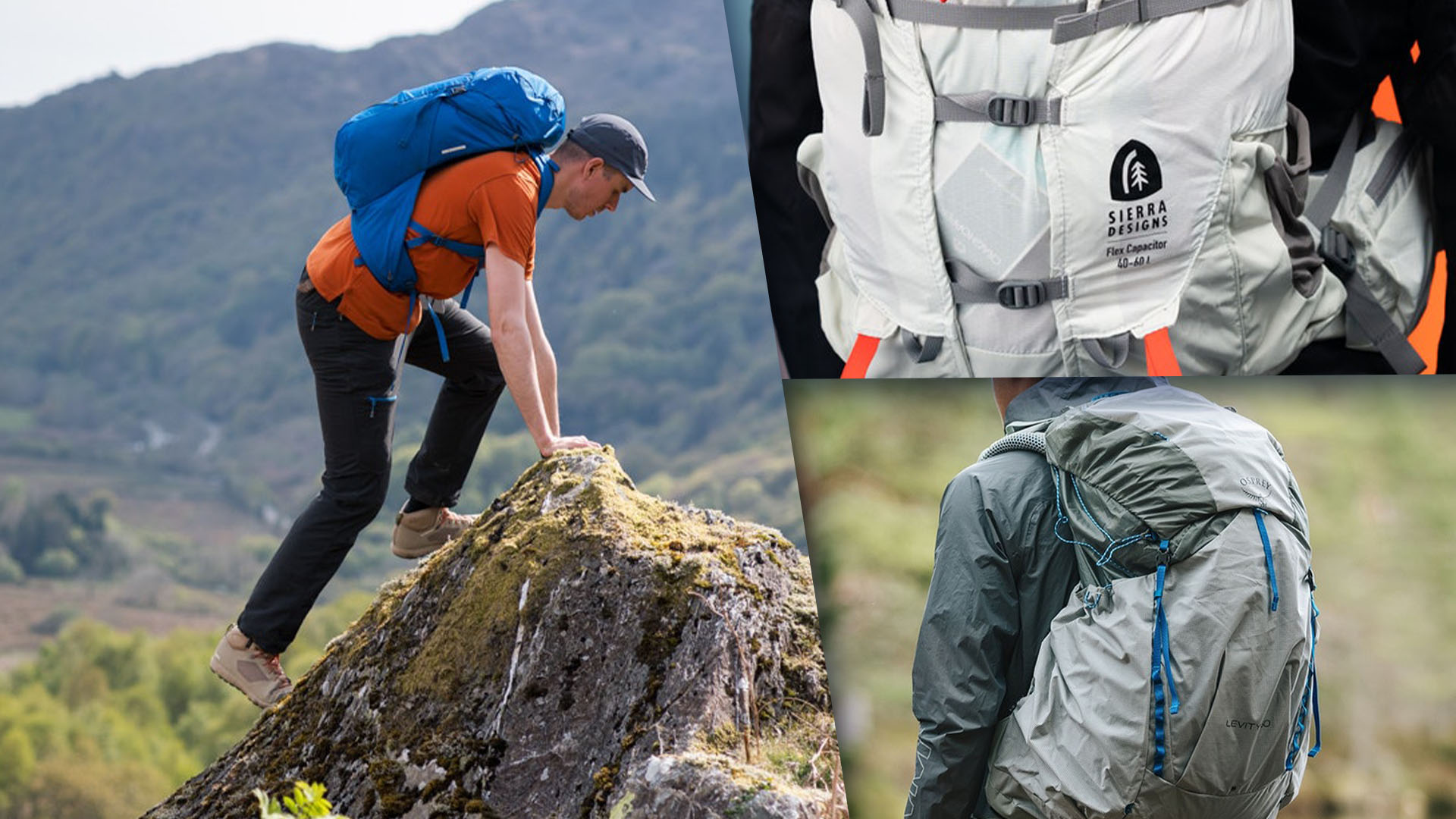
In addition, whether your pack feels heavy or not will depend on your own carrying capacity, which is dictated by your height, weight, body shape, physical fitness and to a certain extent, your mentality too. As such, there are no hard-and-fast rules as to what exactly constitutes an ultralight approach, nor on what is considered an ultralight set-up. However, if you’re weighing all your kit, and recording these weights in order to identify items with potential for weight savings, you’ve certainly got the right mindset. And as a rule of thumb, if you’re packing for a multi-day trip of a few days up to a few weeks, you should aim for your total trail weight to be no more than 10kg. Committed ultralighters might aim to halve that figure again, but getting there means going into the realms of technically advanced (and expensive) fabrics and equipment, as well as being happy with a fairly spartan definition of what amounts to ‘comfort’ on the trail.
Ultralight backpacking has arguably existed for as long as people have been undertaking long journeys on foot, but it was popularised in the USA in the late 1980s and early ‘90s, when the concept of ‘thru-hiking’ epic trails like the Pacific Crest Trail (PCT), the Appalachian Trail (AT) and the Continental Divide (CDT) became increasingly widespread.
Choosing An Ultralight Backpack
It is widely accepted that one of the best ways to minimise your trail weight (sometimes referred to as your base weight) is to focus on the so-called ‘big three’: your shelter, your sleeping system and your backpack. If you’re carrying a lightweight sleeping mat plus a down sleeping bag or quilt, as well as a lightweight shelter or even a tarp and/or bivvy, there is the opportunity to make considerable weight savings when it comes to your pack. Think about it: there’s no need to take a robust, internally-framed pack that can haul loads of 20kg or more if your trail weight is less than 10kg. Instead, you can look at lighter, semi-framed or even entirely frameless packs, utilising lightweight fabrics such as ripstop nylon, silnylon, or even Dyneema Composite Fabric (DCF), formerly known as Cuben Fibre. You may even want to sacrifice features such as hip belts, load lifter straps, chest or sternum straps, and compression straps.
To help you whittle down your lightweight pack selection, we’ve carefully picked out some of the top options from leading brands. All the packs featured below have carrying capacities of 35 litres or more – realistically, the minimum volume needed for a multi-day pack – but weigh less than 1.5kg.
All are also widely available in the UK. Of course, if you’re prepared to import kit from the USA, there is a lot more choice, as many of the best-known ultralight backpacking brands are from small, US-based manufacturers. Good examples include makers such as Six Moon Designs, Granite Gear, Gossamer Gear, ZPacks, Hyperlite and Ultralight Adventure Equipment. Unfortunately, ordering these packs typically entails a long wait and increased expense, as they come with long lead times and additional costs in the form of taxes and import duties. That’s why we’ve largely steered clear of these options given the current difficulties (hey, blame the perfect storm of COVID and Brexit).
Best Ultralight Packs | Top 10
Here are the 10 lightweight backpacks that have impressed us. Rest assured that each one has been tested thoroughly during trips in the UK’s mountains.
-
Best Overall Ultralight Backpack: Atom Packs Atom+ 40
-
Best Value Ultralight Backpack: Montane Trailblazer 44
-
Best Ventilating Ultralight Backpack: Gregory Focal 48
-
Best UL Pack For Customising Fit: Sierra Designs Flex Capacitor 40-60
-
Best Fastpacking Pack: Rab Aeon Ultra
Best Overall Ultralight Pack
Atom Packs Atom+ 40
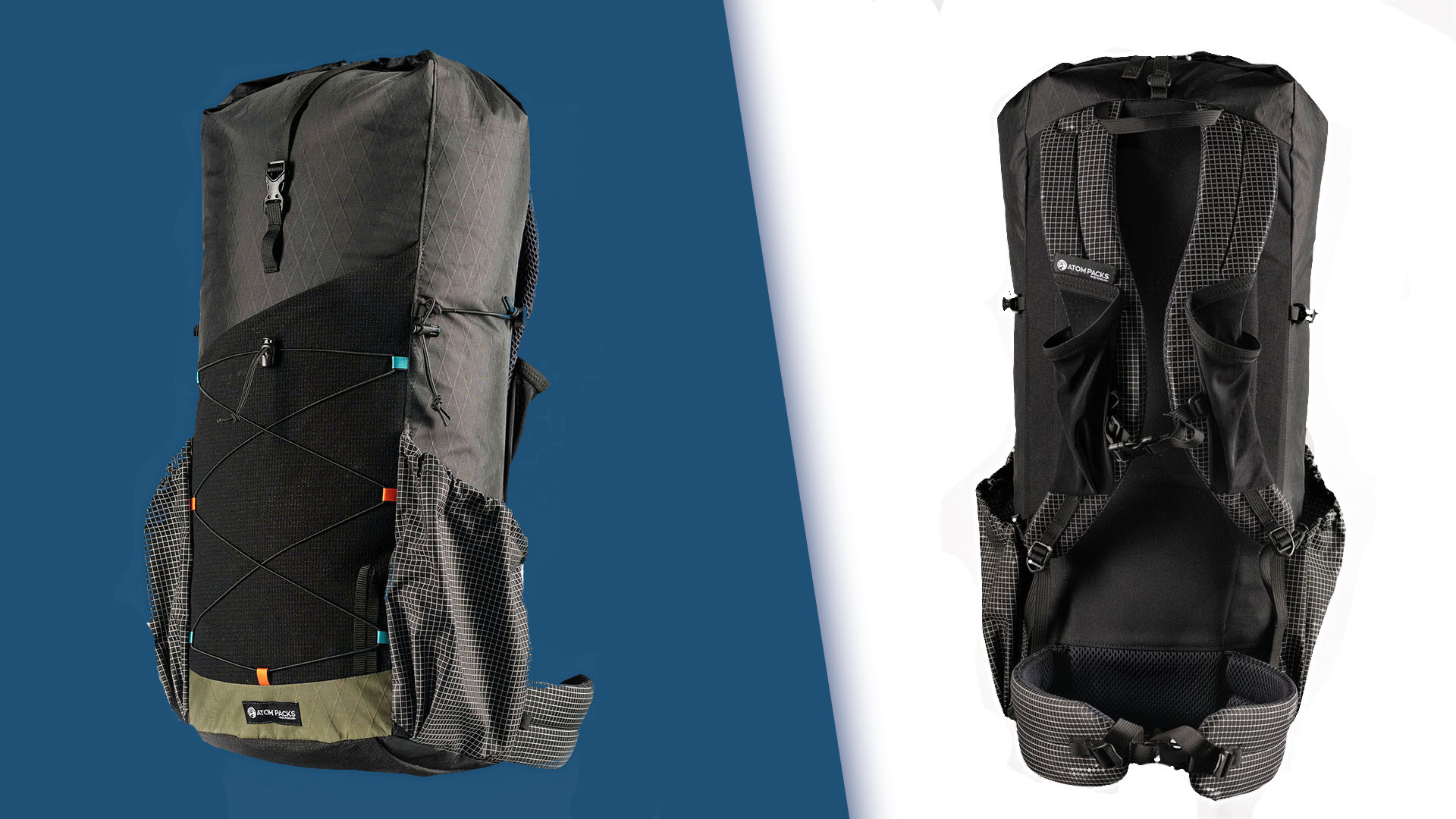
Price: £245
Weight: 600g
Best for: backpacking and thru-hiking
Key attributes: very light, lots of useful details and high spec materials
Atom Packs is one of the few dedicated manufacturers of ultralight packs here in the UK. Based in the Lake District, this small but passionate team are already building an enviable reputation for turning out beautifully crafted, bespoke packs. Led by founder Tom Gale (a gangly 6ft 7in thru-hiker with some of the world’s longest trails under his belt, including the Appalachian Trail and Te Araroa), they manufacture every pack to order. This means that you can specify preferred pocket configurations, fabrics and colours to create a unique custom pack. The packs are also built tough, utilising 210-denier Robic Extreema fabric (or VX07/21 fabrics if preferred), designed to survive multiple days and many, many miles on the trail.
The Atom+ is basically a beefed-up version of the brand’s original frameless ultralight pack, the Atom. This one is built on the same body, but with an increased torso length to accommodate a removable hip belt and a foam back panel with a removable carbon hooped frame. Inevitably this adds a little heft, though the pack still weighs in at just 600g (that’s for the 40-litre size in a medium, with the lightest VX07 fabric as the main body). That makes it the lightest pack in this round-up by some distance. In terms of carrying capacity, it comes in 40 or 50-litre volumes, and the brand reckons it can haul up to about 13.5kg (30lbs) of kit, though we reckon around 10kg is a more comfortable cut-off.
Still, the removable padded foam hipbelt, removable padded back panel and contoured shoulder straps all aid carrying comfort. This is a far less spartan pack than some rivals. It’s also a lot more practical and versatile than most stripped-back, minimalist ultralight packs. For example, the harness incorporates two handy shoulder pockets either side of the sternum strap. These pockets are super stretchy and big enough to hold most smartphones or a fistful of trail bars. You can even get a lightweight flask in there, like a GSI Microlite 720 or Hydro Flask’s 24oz Lightweight Trail series (we tried it with both). There are also two roomy but tough side pockets, a large ‘shove-it’-style front pocket made from Dyneema stretch fabric, and also a Dyneema stretch bottom pocket on the base of the pack. The latter is designed to carry trail trash, which is a nice touch that helps us all to abide by LNT principles.
Elastic shock-cord on the front of the pack plus single side elastics enable you to stash additional gear (or, as the brand suggests, dry out soggy socks). They’re also a great place to secure tent poles or trekking poles, though there’s also a sewn-in trekking pole loop near the base of the pack. This really does feel like a pack that has been designed by people with plenty of experience when it comes to really long walks. If we were going to be hauling a pack through punishing terrain and serious miles, this would be our pick of the bunch, due to its hard-as-nails fabrics and unrivalled build quality. This makes it ideal for long-distance routes in the UK and further afield – and that would include some of the world’s epic thru-hikes, like the PCT or some of Western Europe’s longest Grande Randonnées.
Full Specifications
Weight 600g/21oz (40-litre size in M back length with VX07 fabric) | Volume Available in 40 or 50 litre capacity| Sizes S/M/L/XL back lengths with XS-XL hipbelt | Main fabric 210D Robic Extreema or VX07 or VX21 | Frame Removable carbon fibre hoop | Pockets Up to 8 | Unisex.
| BUY NOW: ATOMPACKS.CO.UK |
Best Ventilating Ultralight Backpack
Gregory Focal 48
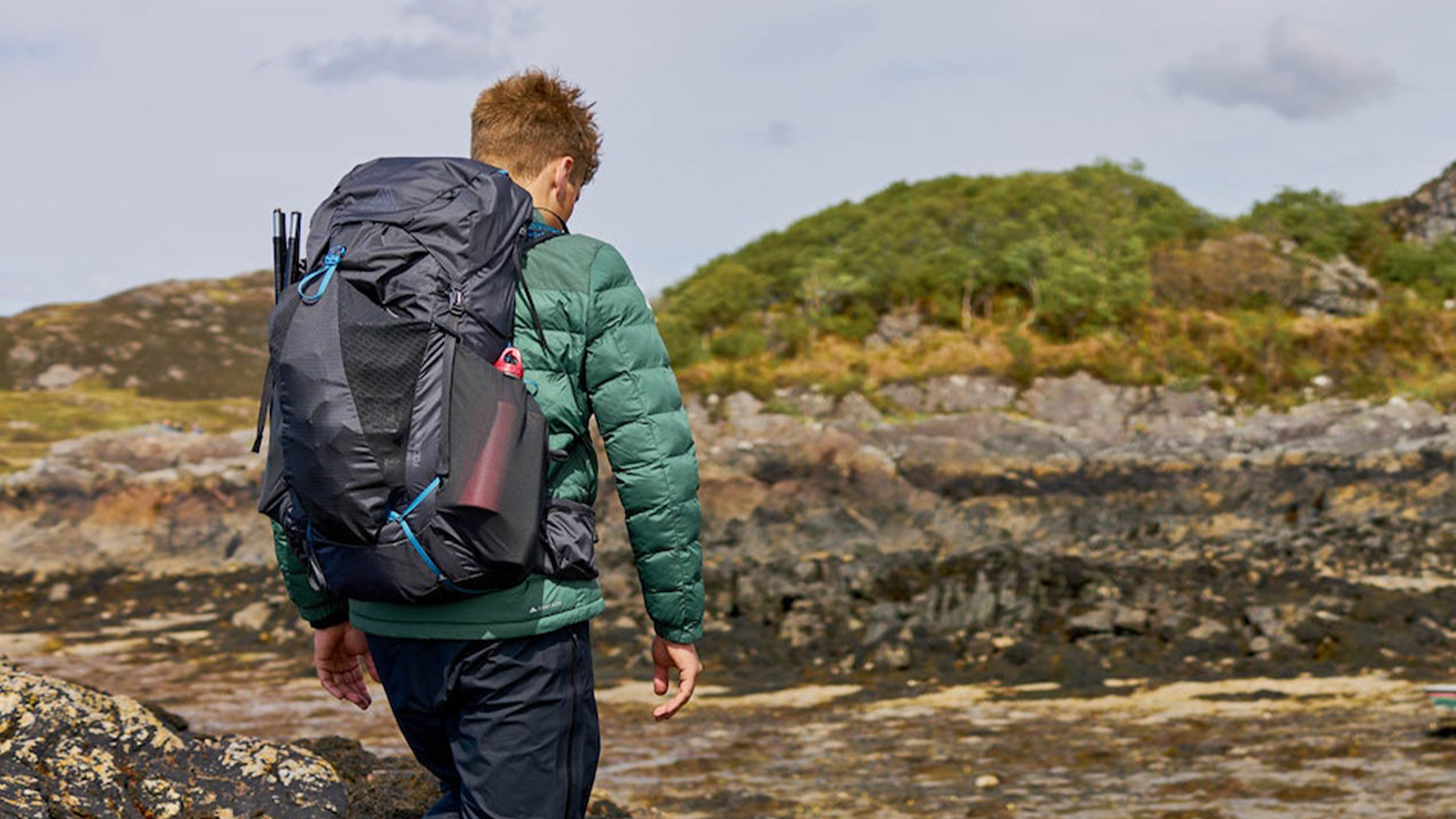
Price: £180
Weight: 800g
Best for: backpacking
Key attributes: ventilating back system, durable fabrics
At just 1.22kg the Gregory Focal 48 just about sits within the lightweight category and will really suit any long-distance hikers who want to take an ultralight approach but that still want useful features and details on their pack.
Its floating lid, volume adjustment straps and stretch mesh pockets make it particularly suited for any thru-hiking where your backpack is going to grow and shrink in size depending on the supply availability ahead of you and it’s possible to strip a little extra weight off it by removing the top lid and using the Weather Flap to cover the top of the pack instead.
The whole back system is lined by a suspended mesh with ventilation spreading right throughout the harness and hipbelt too. There’s plenty of padding, including across the straps, around the hipbelt and at the lower back where there’s a slight curve for lumbar support.
Around half of the materials used for the main fabric of the pack are made from recycled nylon. Inside, the lining is a 40% recycled polyester.
It has a 100D rated fabric at the top and a 250D rated fabric across the base – so it’s a pretty tough pack given how light it is. You can also rest assured that the water repellent treatments Gregory have used here are all completely free from those nasty, eco-hazardous PFCs that are all-too-often used on backpacks.
Full Specifications
100D fabric at top and 250D fabric at base / PFC-free water-repellant treatment / 40% recycled polyester inner lining / Polygiene anti-odour control in mesh back panel / floating removable lid / volume adjustment straps / stretch mesh pockets at front and sides / weather flap for lid / suspended mesh back system / curved back for lumbar support / padded straps, back and hipbelt / medium or large back length options / large zipped pockets on hipbelt / overlid and underlid pockets / slidable sternum strap / built-in emergency whistle / glove-friendly zip pulls / bungee and webbing loops throughout / waterproof raincover and bladder sleeve included.
Read our full Gregory Focal 48 review.
| BUY NOW: EU.GREGORYPACKS.COM |
Best Ultralight Pack for Fastpacking
Rab Aeon Ultra

Price:
Weight:
Best for: fastpacking
Key attributes: excellent load bearing and stability, good water resistance
This pack also made it into our round up of the best running packs which should give you an idea about how versatile it is. From our tests, we’ve found it’ll cater for anything from fastpacking and adventure racing to hut-to-hut trekking and simple day hikes where you need to carry a fair bit of kit.
On one of our most notable trips with it, we took it on a two-day excursion covering the entire An Teallach ridgeline in Scotland, and it served as the ideal companion. The Aeon Ultra had enough space inside it to carry our lightweight overnight gear while ensuring stability and comfort throughout the journey. Just bear in mind that it’s not a pack that’s got the space for much in the way of luxuries!
Its wet weather performance is exceptional. That’s thanks to its highly water-resistant material, roll-top closure, and taped seams. Additionally, it boasts a perforated foam pack system, numerous pockets, and even a dedicated sleeve for a hydration bladder.
And while it’s light, its main material has a surprising amount of durability. Our only gripe from our tests with this is with the mesh pockets – they’re great, but it’s easy to scuff them.
Full Specifications
28-litre capacity / 19″, 48cm back length / hydration bladder compatible / walking pole attachment points / stretch side pockets / harness pockets / 50% recycled 70D x 140D nylon fabric / moulded back panel / roll top closure.
Read our full Rab Aeon Ultra review.
| BUY NOW: RAB.EQUIPMENT |
Best Value Ultralight Backpack
Montane Trailblazer 44
Price: £110
Weight: 980g
Best for: thru-hiking and backpacking, expedition fastpacking
Key attributes: large volume, excellent stability
British brand Montane’s tagline is ‘Faster. Further’, which is an ethos that can be applied to ultralight backpacking as well as trail running. This pack is equally suitable for both pursuits, suiting ‘fast and light’ hikers as well as committed fastpackers. The design employs a single central stay in lieu of a full internal perimeter frame, giving some structural rigidity while keeping weight under a kilo. The harness and back panel are all about lightweight ventilation, with plenty of mesh and perforated foam for optimum airflow. In fact, with the pack on it feels a bit like wearing a trail running vest. That ensures a close, no-bounce fit and gives you plenty of practical pockets for easy ‘on the go’ access to drinks and snacks. You get two zipped chest pockets on the shoulder straps and zipped wing pockets on either hip.
The pack is a lidless roll-top design, but also has stretch mesh front and side pockets, and a forward zipped compartment. Inside there’s a hydration sleeve and a security pocket. Side compression straps, daisy chains and lower gear loops for trekking poles complete the feature set. So, although it’s a minimalist pack, it’s not short on storage solutions. Admittedly, the fabric isn’t the toughest, so this probably isn’t for you if you’re hard on your kit or likely to be doing a lot of bushwhacking. But for beating the averages on classic long-distance walks like the Pennine Way or the West Highland Way, this is the ideal companion.
The harness can be adjusted to fit a range of back lengths, providing sufficient support for loads up to about 10kg. The relatively thin shoulder straps and waist belt don’t have all that much in the way of padding, but if you’ve already got a lightweight setup, that shouldn’t be a problem. The 44-litre size will easily swallow camping gear, cooking kit and some spare clothing, while the profusion of pockets are handy places to stash snacks and tech. Overall, the Trailblazer 44 is a lightweight and functional pack, with a streamlined but practical design. It also seems very reasonably priced, without the eye-watering RRP of most specialist ultralight equipment.
Full Specifications
Weight 980g/34.5oz | Volume Available in 30 or 44 litre capacity | Sizes O/S (adjustable back length) | Main fabric RAPTOR Cross Lite 70 Denier fabric, RAPTOR Resistance 210 Denier base panels | Frame Single centre stay | Pockets 9 | Women’s version? Unisex.
| BUY NOW: MONTANE.COM |
Best UL Pack For Customising Fit
Sierra Designs Flex Capacitor 40-60
Price: £165
Weight: 1168g
Best for: backpacking and thru-hiking
Key attributes: very versatile, excellent volume adjustment, easy access
Designed with the help of US backpacking legend Andrew Skurka, the Sierra Designs Flex Capacitor packs are unique. A horizontal compression system enables the packs to expand outwards, giving you up to an extra 20 litres of capacity. This adds considerable versatility. The result is one pack that will do the job for quick overnighters as well as multi-day, long-distance adventures. It also allows you to overstuff the pack – for example, if you’ll be going a few days on the trail without resupply and therefore need to take on extra food or water. And unlike other packs with extending capacity, which often feel top-heavy when fully loaded, the outwards expansion system ensures that the Flex Capacitor remains stable and comfortable. In part, that’s thanks to a lightweight but surprisingly capable Y-shaped internal frame. This uses DAC aluminium alloy poles, the same as those found in many premium backpacking tents. Zoned shoulder, back and hip padding offers good cushioning, plus a little airflow, and the excellent hip belt transfers weight efficiently.
The top-loading main compartment has a bucket-style opening with a U-shaped zip. It’s easy to pack, with no awkward corners or curved back panel to intrude on interior space. We did find the zipper snagged occasionally on the fabric storm flap that covers it, which is a little frustrating. Inside, a removable mesh sleeve can take a hydration reservoir. On the exterior of the pack, there are twin large mesh stretch side pockets and trekking pole loops. You also get two useful zipped hip belt pockets and stretch pockets on the shoulder harness. These are great for stashing snacks, tech devices or water bottles. There’s no front pocket, because the compression system requires a central gusset and a lot of straps. This is the only real drawback of the design, as when cinched in they’re a little untidy and can flap around or snag on the trail branches and undergrowth. We also wondered about how weatherproof that top zip would be (especially since the pack has no raincover). Obviously, using drybags or a rucksack liner to pack your gear would get around this easily enough. So, overall, the innovative design outweighs any minor gripes, and it certainly proves its value on the trail. It’s a capable and comfortable gear-hauler, yet tips the scales at under 1.2kg (42.3oz). For a pack that will carry up to 60 litres, that’s an impressive feat.
Full Specifications
Weight 1168g/41.1oz | Volume Available in 25-40, 40-60 and 60-75 litre capacity | Sizes S/M and M/L torso lengths plus S/M and M/L hip belt sizes | Main fabric 100D Nylon-Poly Ripstop/420D Nylon Oxford | Frame Y Flex DAC aluminium alloy | Pockets 5 | Women’s version? Unisex.
Chosen for our Outdoor 100 2020/21. Read the full Sierra Designs Flex Capacitor review.
| BUY NOW: SIERRADESIGNS.COM |
Arc’teryx Aerios 45
Price: £220
Weight: 1090g
Best for: thru-hiking and backpacking
Key attributes: good stability, comfort and fit flexibility, high spec materials
Back in June this year, we managed to get our hands on the Arc’teryx Aerios 30, and we were pretty impressed with it. This 45-litre version is its bigger brother, sharing many of the same features as its smaller sibling but with a larger capacity built to handle overnighters and multi-day trips. Both are from the Canadian brand’s Aerios range of ‘fast and light’ kit, which so far encompasses a streamlined range of backpacks and trail shoes aimed at fast-packers.
Tipping the scales at just over a kilo, the Aerios 45 has an impressive volume-to-weight ratio. As we’ve come to expect from Arc’teryx, it employs premium materials, utilising tough but lightweight fabrics. The main body of the pack is a 210-denier Cordura nylon blend, with a ripstop grid employing liquid crystal polymer (LCP) mesh. LCP is basically the material known as aramid or Kevlar by another name – the same stuff used in bulletproof vests. As such, this is a pack that should withstand abrasion very well, making it ideal for tough trails.
“It’s easy to ensure a great, dialled-in fit.”
The design is similarly considered. It’s a rolltop-style pack with plenty of clever additional storage options and customisable elements, plus a low-profile harness derived from trail running packs. The pack has no rigid internal alloy frame – instead, it employs a stiffened framesheet comprised of foam and plastic polymer. It’s an excellent weight-saver that still gives the pack the capability to haul loads up to about 12kg. The innovative harness consists of padded, contoured shoulder straps with twin sternum straps and two zipped stretch mesh pockets. These wide panels conform to the shape of your torso, while the double bungees are designed to rise and fall with your chest movement. There are two further stretch mesh pockets on the hipbelt – one is zipped, the other elasticated. The belt is there for load stability rather than weight-bearing. It’s relatively thin, though well-shaped and ventilated. What you do get is a very close fit with minimal bounce, making this a pack well-suited to moving quickly over varied terrain.
There are lots of other features to like too. The AeroForm back panel is made of breathable mesh, which has a series of raised bumps or dots to further improve airflow. However, it feels a lot tougher than most mesh overlays. It’s a fixed back length, but the pack comes in both men’s and women’s versions, with two sizes (regular or tall) in each gender-specific version. As such, it’s easy to ensure a great, dialled-in fit.
The pack is top-loading, but there is two-way access to the main compartment via either the roll-top (which can be closed drybag style or cinched down using side compression straps) or a long side zip. This makes it easy to rummage around inside without needing to unbuckle and unroll the top section. The zipper itself is also a highly water-resistant, laminated, reverse-coil design.
We also liked the clever pocketing. The disadvantage of most roll-top packs is that you lose the additional storage of a traditional lid, but the Aerios overcomes this by instead giving you a zipped front pocket that you can basically used in the same way as a top lid pocket. There’s also a smaller security pocket with a key clip inside the main compartment, along with a hanging loop for a water reservoir and an exit port for a drinking tube. However, the pack’s best feature are its two cavernous side pockets, which have an adjustable shock cord system. They’re big enough to take two or even three water bottles (each!), or perhaps a sleeping mat or even your tent. The pack has sturdy daisy chain loops on the front and sides too, as well as a front shock-cord system. This makes it extremely configurable, so you can adapt the exterior as required. So, despite the streamlined and focused design, it’s a surprisingly versatile beast.
Full Specifications
Weight 1090g/38.4oz | Volume 15, 30 or 45 litre capacity | Sizes Reg/Tall torso lengths | Main fabric 210D Cordura nylon 6,6 w/ 6.5 twisted 200D Liquid Crystal Polymer grid | Frame Foam/polymer framesheet | Pockets 8 | Women’s version? Arc’teryx Aerios 45 women’s (also available in reg/tall sizes).
The smaller Arc’teryx Aerios 30 was chosen for our Outdoor 100 2021/22. Read our full Arc’teryx Aerios review.
| BUY NOW: ARCTERYX.COM |
Haglöfs L.I.M 35
Price: £120
Weight: 930g
Best for: weekend wild camping
Key attributes: venting back system, water resistant fabric, good value
The L.I.M 35 is essentially a large daypack, ideal for the biggest hill days from spring through to autumn. But since it can swallow 35 litres yet tips the scales at under a kilo, we felt it also merited a place in this ultralight packs round-up. It’s certainly one that will appeal to streamlined ultralighters and long-distance fastpackers, as well as lightweight wild campers looking for a compact but capable companion for quick overnighters.
Haglöfs’ L.I.M series stands for ‘Less Is More’, so it’s no surprise that the design ethos behind this pack is all about low weight and stripped-down features. However, this philosophy isn’t intended to compromise on performance or durability. As such, it has a full perimeter wire internal frame and a suspended mesh back system. This offers high levels of comfort and excellent airflow. And though the fabrics are lightweight, they’re also decently durable. The main body is made from 70-denier rip-stop polyamide, reinforced with a 140-denier panel in the base. All the materials are also Bluesign approved, ensuring the fabrics have been sustainably produced.
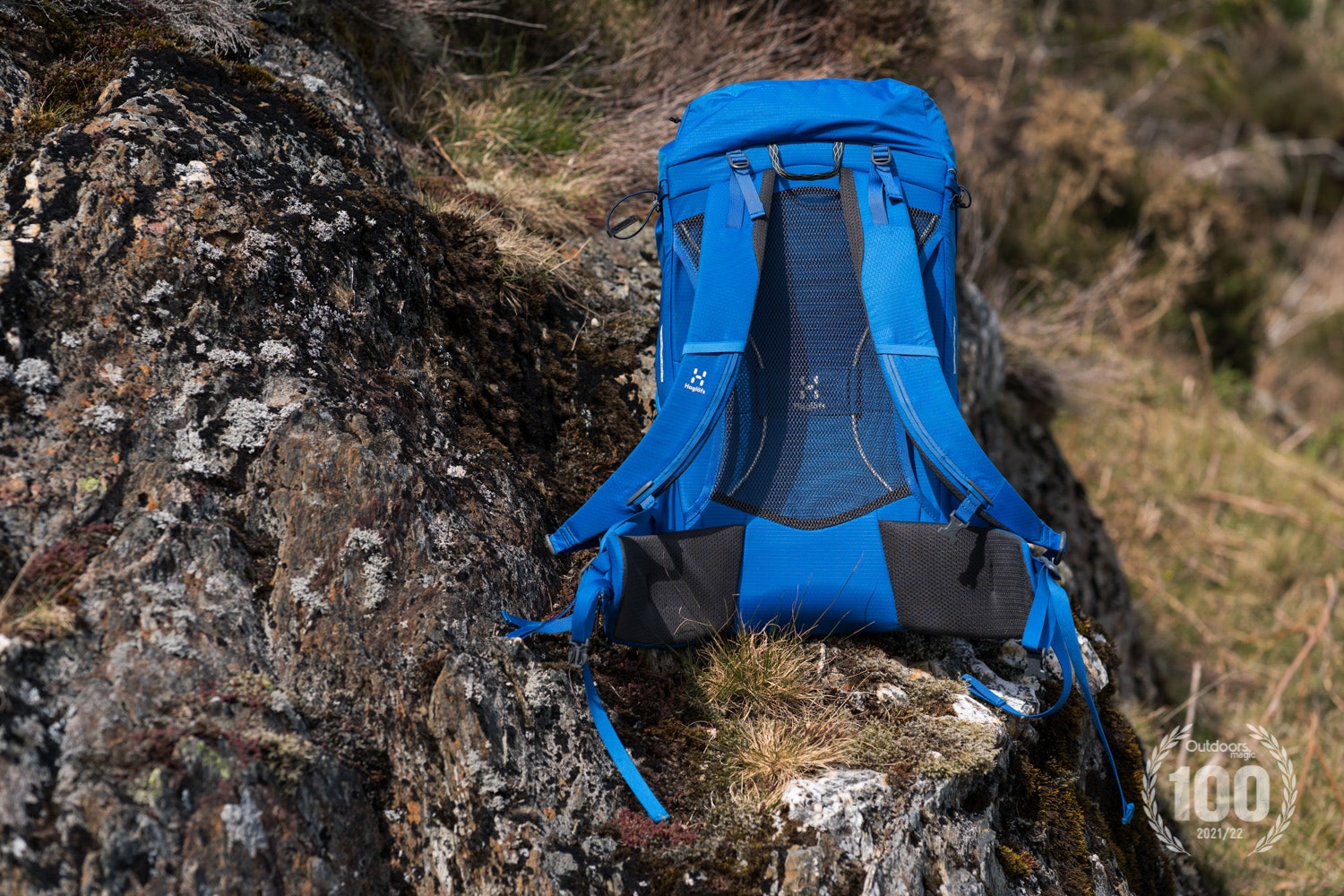
It’s a pretty versatile beast, and one that is a more comfortable carry than many rivals. That’s down to a well-designed harness in addition to that excellent ventilated back system. The hip belt consists of two broad padded fins with a single-pull, dual webbing strap. It does a good job of hugging the hips while simultaneously spreading the pressure over a wide surface area, which is far more effective than the often thin and basic waist belt straps found on most minimalist packs. Shoulder straps are fairly well padded too, with mesh inlays around the neck and collarbone area. They’re also equipped with load lifters and a sternum strap to further dial in the fit – just as well, since the back length is fixed and the pack only comes in one size.
In terms of storage, you get two triangular zipped stretch wing pockets plus two stretch mesh side pockets. The top-loading main compartment has an inner hydration sleeve and exit port, plus drawcord collar and a fixed lid with a small outer zipped pocket. The pack is fairly easy to load, though like a lot of trampoline-style back systems, that curved panel does intrude on the interior space a little. A minimalist shock-cord system on the outside of the pack offers both compression and additional gear storage.
Overall, we were impressed. The ventilated back system and well-designed harness make this a far more capable and comfortable pack than most rivals of similar capacity. In turn, this adds versatility, making it suitable not only for big hill days but also for minimalist overnighters or fastpacking trips.
Full Specifications
Weight 930g/32.8oz | Volume 25 or 35 litres| Sizes One size | Main fabric 70D diamond ripstop nylon with 140D reinforcements | Frame Perimeter wire frame | Pockets 5 | Women’s version? Unisex.
Chosen for our Outdoor 100 2021/22. Read our full Haglöfs L.I.M 35 review.
| BUY NOW: HAGLOFS.COM |
Exped Lightning 45

Price: £170
Weight: 1164g
Best for: thru-hiking and backpacking
Key attributes: comfortable hip belt, good volume adjustability, weatherproof
The Exped Lightning is one of the most popular ultralight packs around. It was first released almost a decade ago, and the basic design is now well-proven. As such, you’ll see thru-hikers lugging the Lightning on long-distance trails throughout Europe as well as in the USA. In essence, it is a top-loading, lidless roll-top pack with well-padded shoulder straps. These are connected to a similarly well-padded lumbar panel and hipbelt via a single, chunky aluminium stay. There’s no framesheet or foam back panel, so there’s very little material against your back, delivering great ventilation. The vertical stay is augmented by an internal horizontal bar, forming a T-shape that Exped calls its ‘T-Rex’ frame (see what they did there?).
The latest version of the pack has tougher and more weatherproof fabrics than ever before, with a stronger T-frame and a redesigned lumbar pad and hipbelt. Otherwise, the features are relatively straightforward, consisting of a roomy main compartment with a mesh inner pocket for a water reservoir, and a deep external top pocket with a water-resistant zipper. Then you get twin stretch side pockets and zipped hipbelt pockets, plus external gear loops. There are also loads of compression straps to help stabilise your load or carry extra gear on the outside of the pack. Some might find this system a bit fussy, but it’s easy to customise the Lightning by removing the external webbing as preferred. In fact, if you don’t need the straps, you can take them all off, resulting in a very clean and streamlined pack.
“Balance between overall weight, carrying capability and user comfort.”
The sliding back system is a little fiddlier than some, but it has a wide range of adjustment to suit various torso lengths (hint: you’ll need to detach the Velcro lumbar pad, which folds down to give access to a hidden buckle). When set up correctly, it is a pretty capable gear-hauler. If you’re used to a full foam back panel or a trampoline-style system, the shoulder and lumbar padding might feel a little strange at first, but it does a good job at preventing a sticky, sweaty back. However, one thing to bear in mind is that you need to load the pack carefully to stop anything digging into your back. So, it’s a pack that suits highly organised hikers, especially since the lack of a lid, bottom compartment or front pocket means the bulk of your kit will all need to go in the main compartment.
Still, we liked the Lightning a lot. The latest iteration is a marked improvement on the previous generation that now strikes an even better balance between overall weight, carrying capability and user comfort. The build quality is also good, with tough fabrics and a highly weatherproof roll-top design that will suit long-distance walks in variable conditions. We reckon it would be ideal for walkers tackling classic long-distance routes like Wainwright’s Coast-to-Coast or even the Cape Wrath Trail.
Full Specifications
Weight 1164g/41.05 | Volume Available in 45 or 60-litre capacity | Sizes One size (adjustable back length) | Main fabric 210D ripstop nylon, PU coated (1,500mm HH), Oeko-Tex 100 certified with DWR | Frame Aluminium alloy ‘T-Rex’ frame | Pockets 5 | Women’s version? Unisex.
| BUY NOW: EXPED.COM |
Osprey Exos 48
Price: £160
Weight: 1200g
Best for: thru-hiking and backpacking
Key attributes: excellent load bearing and breathability
A stalwart of the lightweight backpacking scene, the Exos – or women’s Eja – is a perennial favourite amongst fast and light multi-day hikers. It was first launched back in 2009 before being redeveloped in 2014 with the now-familiar Exoform harness and Airspeed back system. It’s been part of the Osprey line-up ever since. Why? Well, basically, because the Exos and Eja series give you all the features and carrying comfort that are associated with Osprey packs, but with minimal weight.
The result is a pack that looks and feels a lot like the more deluxe gear-haulers in the Osprey range, while weighing in at just 1.2kg. We mentioned the harness and back system up top. This is a suspended-mesh, trampoline-style system, delivering plenty of airflow, combined with plush, padded, ergonomically sculpted shoulder straps and low-profile hip fins. The latter aren’t quite as comfortable as the wraparound hipbelts of Osprey’s bigger trekking packs, but are still supportive enough to handle lightweight and mid-range backpacking setups, providing decent weight transfer and good load stability. The pack’s perimeter alloy frame adds further rigidity to help carry reasonable loads in comfort.
Features are trail-friendly and useable: the Exos has roomy side pockets, a front stretch shove-it pocket fitted with a buckle and a floating, twin-buckle lid with both inner and outer zipped pockets. The main body of the pack is accessed under the lid, with a drawcord collar and top compression. Inside, there’s a hydration sleeve and exit port. The main compartment will accommodate plenty of kit, though it does require careful packing thanks to that curved back panel, which intrudes slightly on the internal volume. The outside of the pack has side compression webbing, an attachment loop and ‘stow on the go’ fitting for stashing trekking poles, plus lower webbing straps for attaching a sleeping mat or tent. To a certain extent, the pack is also strippable, as in common with many other Osprey packs, it has a removable lid with a FlapJacket top cover to give some added protection to the top drawcord closure.
So, with all these features, how comes the Exos is so light? The savings are largely down to the fabrics – the main body of the pack is made of 100-denier high-tenacity nylon. It’s a much lighter fabric than is typically found in most trekking packs, though still has a high strength-to-weight ratio. It ought to outperform packs like the ultralight Osprey Levity or Montane Trailblazer in terms of outright durability, while matching others like the Mammut and Sierra Designs options featured here.
Ultimately, the Exos is a superb all-rounder, and that is probably what accounts for its enduring popularity. It boasts excellent carrying comfort and stability, plus all the user-friendly design features of a conventional lidded rucksack. But at 1.2kg, it’s comparable in weight terms to far more spartan, skeletally framed packs like the Exped Lightning or Sierra Designs Flex Capacitor. So, if you’re looking to drop your trail weight but aren’t willing to make too many compromises, the Exos is an attractive choice – particularly when you also consider its pretty reasonable price point.
Full Specifications
Weight 1200g/42.3oz | Volume 38, 48 or 58 litre capacity | Sizes S/M/L torso lengths | Main fabric 100D high-tenacity nylon | Frame Lightweight perimeter alloy | Pockets 5 | Women’s version? Osprey Eja 38/48/58 (available in S/M sizes).
| BUY NOW: OSPREYEUROPE.COM |
Mammut Ducan Spine 50-60
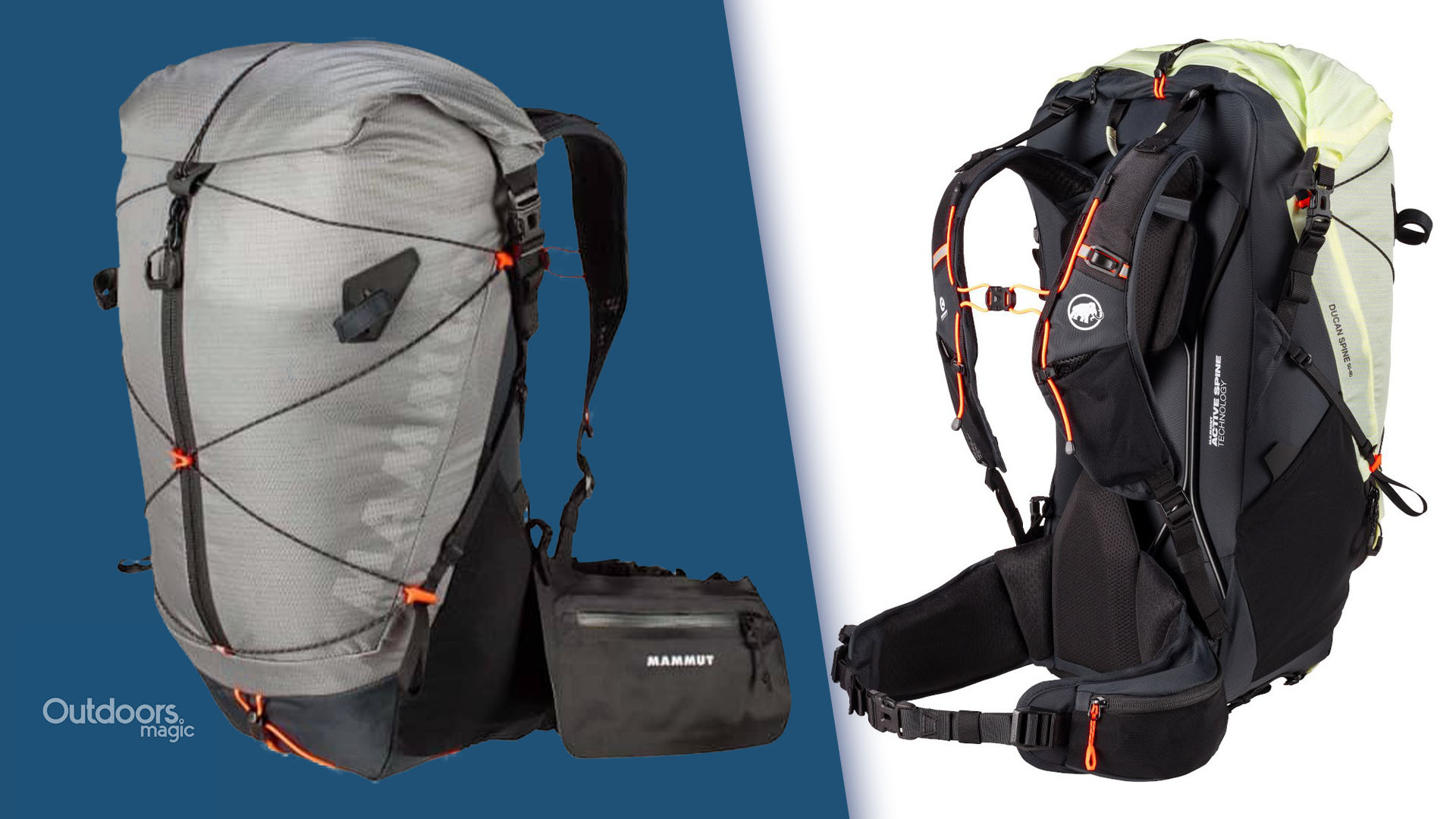
Price: £165
Weight: 1530g
Best for: thru-hiking and backpacking
Key attributes: high spec materials and design, excellent stability, quick compressibility
Described as a ‘lightweight hiking pack’, the Ducan Spine is built around a robust tubular alloy perimeter frame, which gives it plenty of rigidity and stability even when lugging heftier loads. So, while it isn’t in the same weight division as many sub-1kg ultralight packs, it’s a far more capable gear-hauler that, at a fraction over 1.5kg, still offers an excellent volume-to-weight ratio. To borrow an analogy from boxing, you can think of it as a welterweight rather than a featherweight, but with the bigger build to match. Basically, this is a pack designed to go the distance – although in terms of miles rather than rounds.
Load-bearing ability is further enhanced through Mammut’s innovative ‘Active Spine’ technology; a double-pivoting system designed to move with the natural motion of the hips and shoulders. We’ve seen pivoting hipbelts on many packs in the past, but the Ducan Spine also has pivoting shoulder straps. These are joined to the hipbelt by a flexible fibreglass rod, creating an hourglass-shaped back panel that supports the shoulders and lower lumbar while also holding the pack slightly away from your back for improved ventilation.
In fact, the only aspect that limits carrying comfort is the harness itself, which has some padding, but still isn’t the plushest (particularly compared to the deluxe cushioning of Mammut’s heavier, mountain-focused Trion Spine series). This pack also only comes in one size – though there is a women’s version – with a fixed back length. As such, it’s important to check the fit before you buy. The adjustable load lifter straps can be used to tweak the harness slightly, but it’s still a pack best suited to those with a back length of 18 inches or thereabouts (or around 16 inches in the women’s version).
That said, if it fits, you’ll likely love this pack. It boasts an array of original and practical features, like a single-pull compression system and a nifty removable waterproof pouch that attaches inside the pack, on the hipbelt or on the chest, giving you a versatile extra pocket. The roll-top design has a wide mouth opening to make it easier to access the main compartment, whether you’re packing up or rummaging through the pack for kit on the trail. There’s also a central zip to make this even easier, and there’s a zipped bottom compartment too. This would come in particularly handy for hut-to-hut trips, where you might just need to access a few essentials without unpacking your entire rucksack. The main closure is very secure, with a secondary zipper in addition to the drybag-style roll-top buckle. This means that if needed, it’s easy to overstuff the kit to carry extra supplies. The super-stretchy side pockets are very roomy, and will take a 1-litre Nalgene bottle, though the mesh fabric feels quite delicate. Still, it’s an impressive piece of engineering and a great choice for weight-conscious hikers tackling everything from long-distance walking routes to multi-day mountain treks.
Full Specifications
Weight 1530g/53.9oz | Volume 28-35 or 50-60 litre capacity | Sizes O/S (fixed) | Main fabric 100D nylon-polyester blend with 210D nylon base | Frame Tubular alloy perimeter | Pockets 7 | Women’s version? Mammut Ducan Spine 50-60 women’s
| BUY NOW: MAMMUT.COM |
Lightwave Fastpack 50
Price: £149
Weight: 1150g
Best for: backpacking and thru-hiking
Key attributes: tough, weatherproof, good value
Though you might not have heard of Lightwave, the brand has actually been around since 2002. The brainchild of Kiwi climber and trekker Carol McDermott, it’s a small, independent company dedicated to making lightweight, functional kit – namely, a small but considered range of packs, sleeping bags and tents (including the impressive Sigma S22, which we reviewed back in 2019).
The Fastpack rucksack is a staple of the product line, available in 30-litre, 40-litre and 50-litre models. All are comfortable, lightweight and highly weatherproof packs, with even the biggest size, which we’ve got here, weighing in at just 1.15kg. Despite that low weight, however, it’s built tough. The back panel and structural areas employ a 420-denier Dynatec fabric, a high-tensile polyamide (nylon) developed by Schoeller. Other panels are made from 300-denier micro ripstop polyester. This is a pack that definitely feels like it’s built for the long haul.
In essence, the Fastpack 50 fills the niche between ultralight packs made from gossamer-thin fabrics and heavier, more traditional framed trekking packs. It will comfortably carry backpacking loads of up to 12kg, thanks to two internal curved titanium stays, which provide the basis for the pack’s rigidity and support. A close-fitting moulded foam back panel ensures plenty of stability too, keeping the load close to the spine – though this does admittedly come at the cost of a little breathability back there.
Unlike most ultralight packs, or indeed most rucksacks in general, the Fastpack 50 is, to all intents and purposes, waterproof. That’s because all the seams on the main body and lid are either welded or taped. This means the Fastpack 50 is a great choice for trekking and backpacking in winter or in wet weather. The pack is further winterised with the addition of ski-holders at the base of each side, which can be used with the side-compression system to carry skis securely. This is an unusual design feature that adds further versatility for those considering multi-day, cross-country ski trips in the Nordic countries, for example.
The top-loading main compartment is extremely roomy, and the back system hardly intrudes at all on the internal volume, despite those pre-curved stays. It is fitted with a stretch sleeve for a water reservoir and an exit port for a hydration tube. It fastens conventionally with a drawcord collar and a fixed, twin-buckle lid. The lid has a big top pocket with a water-resistant zipper and a shock-cord system to stow additional gear. The front of the pack is a clean and durable single panel, with lower attachment loops for trekking poles and upper elasticated toggles to secure them. However, there are also daisy chain loops to enable you to fit shock-cord stowage if desired. Two stretch mesh side pockets, zigzag side compression and those aforementioned ski holders complete the feature set.
The harness is well-padded, with a chunky hipbelt that wraps around you securely. This has a split design to promote airflow and a two-point waist buckle that adjusts on each side with a single pull. Shoulder straps are carefully contoured, with top load-lifters and a chest strap. The right-hand strap also has a clip for a drinking tube.
It’s worth pointing out that since this is a unisex design with a fixed back length, it lacks the adjustability of some other ultralight packs. But if it fits, it’s a stable and comfortable carry. The fact that it is so tough and weatherproof also counts in its favour – for winter backpacking trips or long walks in mixed terrain and variable conditions, we’d pick this pack over most others here.
Full Specifications
Weight 1150g/40.5oz | Volume Available in 30, 40 or 50 litre capacity| Sizes Fixed back length (fits up to 48cm/18.8ins) | Main fabric 420d Dynatec back panel and structural areas, 300d micro-ripstop polyester on main front areas | Frame 2 x 7mm pre-curved titanium stays | Pockets 3 | Women’s version? Unisex.
| BUY NOW: LIGHTWAVE.UK.COM |

